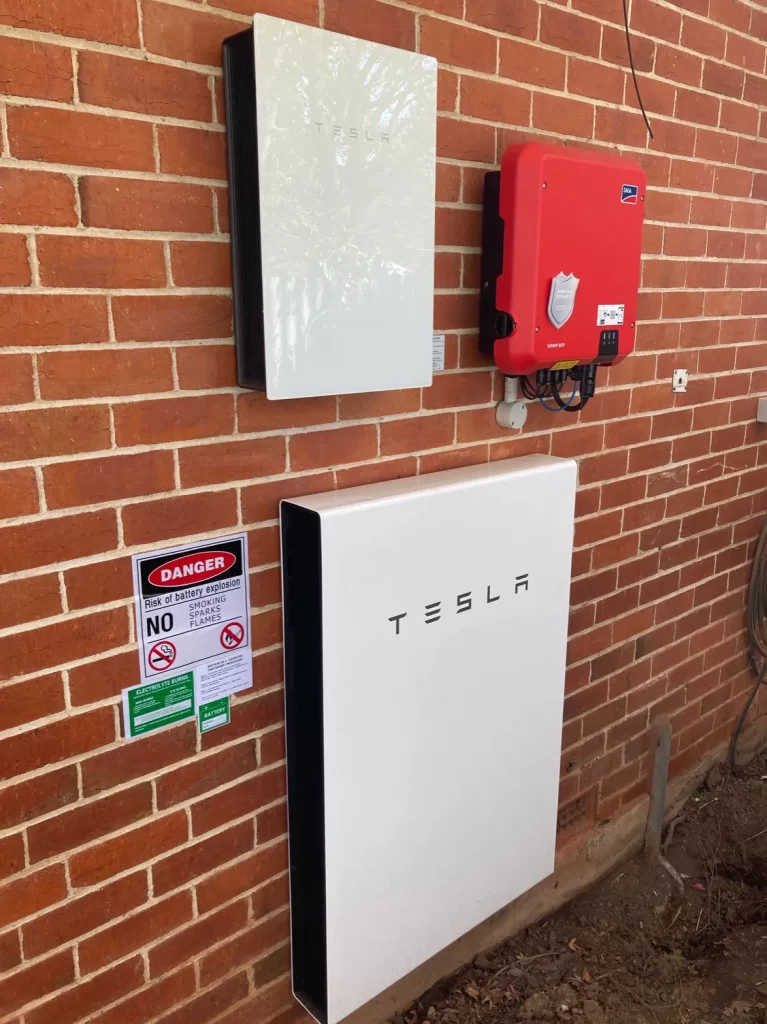By Ian and Prue
Our home is in central Wangaratta and was built in 1934. We purchased the home in 1981 – so we have resided in the home for almost half its life! We have been fortunate to meet previous residents of the house, so our connection now goes back even further.
The original footprint of the home was approximately 90 m². An extension in 1985 created an overall footprint of 170m². The house’s orientation is north with a bedroom and lounge room as the north facing rooms. The original house is double brick, and the extension is brick veneer.

When we moved into our home the northern front yard was grass with edging plants, and the rear yard had an orchard and chicken run. Both aspects were flattened and we started again with a “blank canvas”. Guess what now fills the rear yard? – fruit trees and chooks!
Very early in the 1980’s I attended a Home Energy Efficiency talk by the Gas & Fuel Corporation at The Centre. I came home thinking we would have to lift the house up and rotate it 180⁰ to create a solar passive house!
In trying to describe our project over such a long period of time, it has been a part renovation/retro-fit with an attempt to take the building’s age and style into account. There have been times when the frustrations of living in a building that was not designed to be solar-passive, has had us thinking of selling up and planning a new build with the latest technology and knowledge. Instead, we have slowly tried to transform our home to be a liveable space in Wangaratta’s variable climate, and reduce our carbon footprint.
As our residency has continued over the decades, our commitment to a sustainable home has grown.

Heating and cooling has been a challenge. Externally, we have utilised shading in summer from kiwi fruit vines and canvas blinds. The dual benefits of kiwi fruit on the western trellis have been very positive, although the deciduous leaves don’t fall until late May when we would like the sunshine streaming through our windows. The daily opening and closing of windows and blinds to cool the house in summer is an easy ritual. A whirlygig heat extractor on the roof works in unison with insulation in the roof space. Internally, most windows have honeycomb blinds that are very impressive in limiting heat transfer. Reversible ceiling fans in bedrooms and living spaces move the air effectively. Draught proofing is an on-going process, and a local hardware store has a variety of products for the purpose. Recently, the addition of a six kilowatt solar system, Tesla battery and a ducted heating/cooling system, has created a very liveable home adapted for a changing climate.

Interestingly, the simple addition of a Tesla app to view energy creation, distribution and use, really informs the way we can live in our house. We buy and sell power through Indigo Power https://indigopower.com.au/ . Buying power from renewable energy production is very important to us.
We are slowly electrifying our home to make full advantage of the investment in solar and battery storage. Two internal gas heaters will disappear soon, and replacement of our gas water heater is next on the wish list.
Each time we need to replace appliances in the home, we research electrical consumption efficiency, water consumption efficiency and durability of the product. www.productreview.com.au, www.choice.com.au, and www.renew.org.au are good starting places. We look at the second-hand market as well. One of our best buys was a very efficient Electrolux refrigerator purchased from a couple moving from South Bank, Melbourne to New York.
On that note, a lot of our furniture is second hand and mainly sourced from gumtree. Doors in our extension were sourced from a demolished pub in Geelong, and terracotta floor tiles were seconds from a tile wholesaler. Our standard Hills Hoist solar and wind powered clothesline is partnered with an internal clothes hanger on an easily accessible pulley system. The clothes drying rack frame’s former life was as a plywood wardrobe door. The three “R”s – Reduce/Reuse/Recycle are a key component to living in a sustainable house.

Our water consumption is aided by a water storage tank and pump connected to a toilet and garden drip watering system. This can also divert water to the laundry. Another addition to recycling water is a grey water system using a NOVA box that reuses shower water to irrigate our rear yard https://www.dabpumps.com/en/products/submersible-pumps/automatic-lifting-stations/novabox
Our rear garden orchard is evolving to deal with fruit-fly. A plum tree was removed last year and replaced with two early fruiting cherry varieties. Late fruiting citrus varieties also miss the fruit fly infestations. Early fruiting berries are a joy – the humans, chooks and a dog all think so. Two small garden plots supply seasonal vegetables. Currently five productive females produce eggs while they free range in a large proportion of the yard. Free ranging chooks can be problematic on an urban block but the benefits out-weight the issues.
Our north facing front yard also includes vegetables, fruit trees and strawberries. The addition of sunflowers each year creates a happy garden and food for the chickens. Our nature strip has a small community herb garden for passers-by to use.
Although our house is not an 8 star plus dwelling, it is increasingly energy and water efficient, and comfortable to live in.
We debate the need for double-glazing older double-hung windows, fitting under floor insulation in a difficult space, creating more storm-water storage, getting rid of the firewood stack and a cosy, open fire-place, and selling an ageing 4WD in the driveway in favour of an electric car.
Retro-fitting older homes to be more sustainable can be a challenge. Our experiences have been more of a marathon than a sprint, and someone keeps moving the finishing line.


